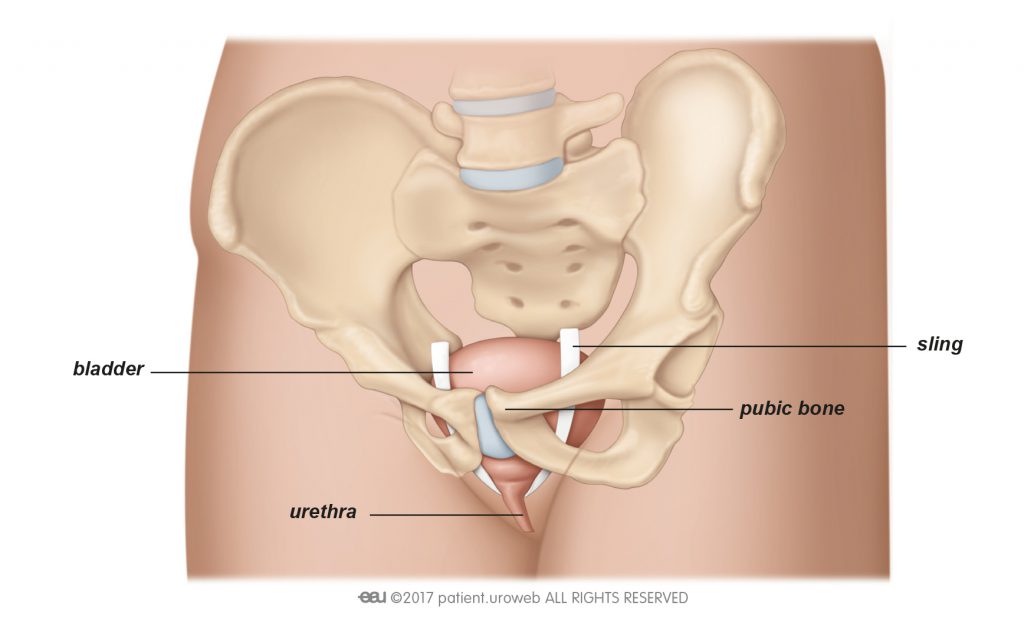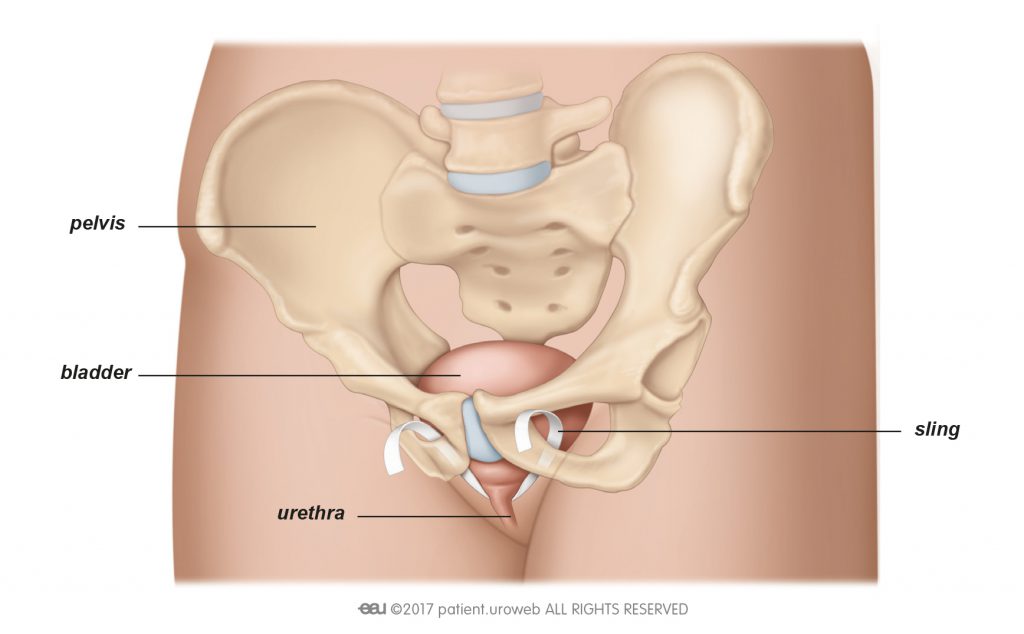Up until recent years a midurethral sling was the standard surgical treatment for treating stress incontinence in women. It involves inserting a mesh strap, called a sling, under the urethra to support it. The sling is made of synthetic material, and helps the urethra stand up to pressure when you do a sudden movement or action, such as a cough or sneeze. The sling material remains permanently inside your body and it is not absorbed over time.
When correctly placed, the sling supports the urethra like a hammock, helping to prevent the urethra from collapsing and leaking urine unexpectedly, as might usually happen with stress incontinence.
If this surgery is recommended for you, your doctor will discuss in detail how they would plan to insert the sling. However, there are now procedures which have less serious complications than those midurethral slings caused. Additionally, midurethral slings are not available in all countries, due to the nature of the complications sometimes associated with them. Some countries still offer them, but doctors are careful to assess the risks and discuss these thoroughly with their patients.
There are two different ways the operation can be carried out: a retropubic approach, sometimes called TVT, or a transobturator approach, which is sometimes called TO. A retropubic approach means the sling is inserted via the vagina behind the pubic bone, whereas the transobturator approach involves the sling being passed through the window of the pelvic bones.
The operations involve a surgeon inserting the sling through your vagina using special surgical tools and a guide to make sure that the sling is positioned correctly. Both types of midurethral sling operation are very effective.
Although midurethral slings are very successful in the treatment of stress urinary incontinence, complications can occur, which can make your urinary incontinence worse. This can require further operations to correct.
Your doctor will discuss thoroughly with you, the benefits and risks of this type of operation, the types of slings available in your country and alternative treatments available to you.



